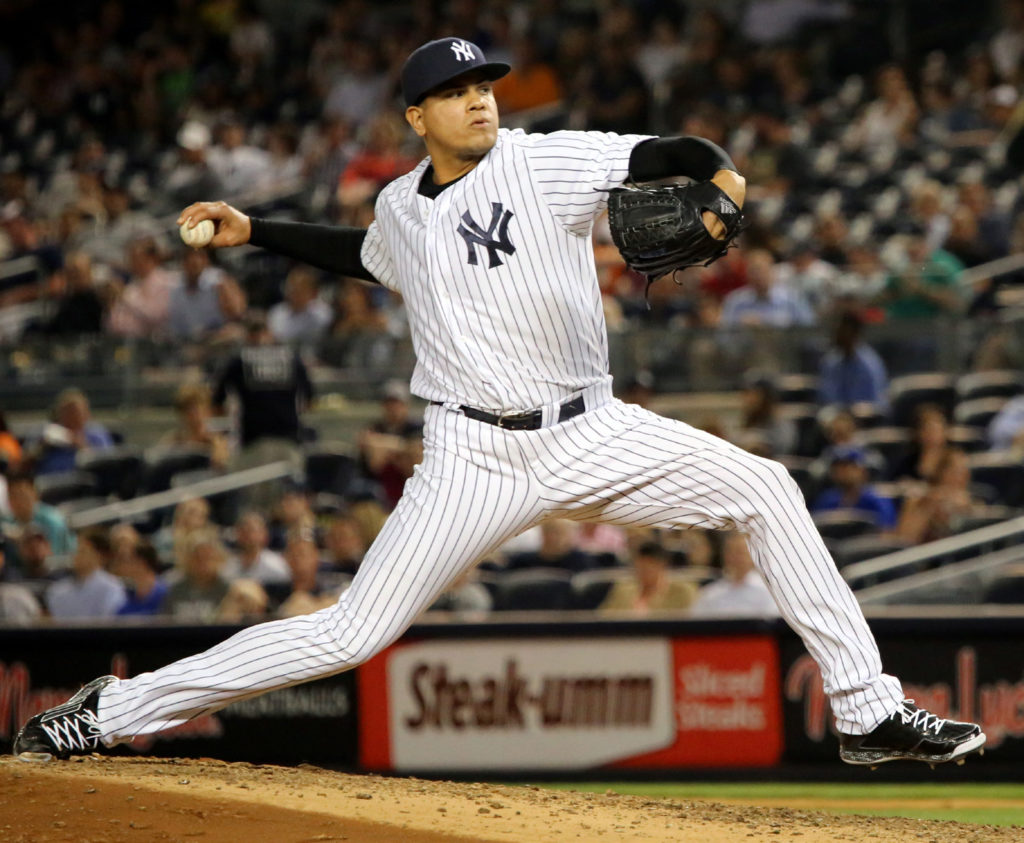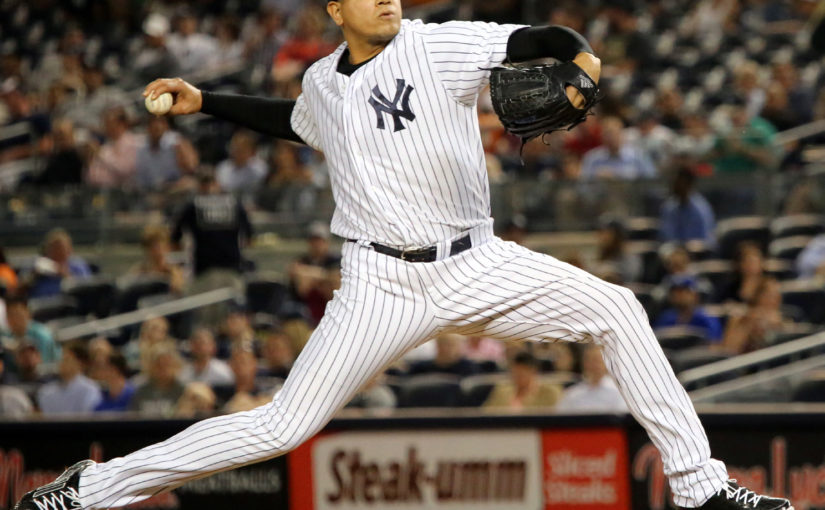
Dellin Betances fits the mold of the modern reliever.
Perhaps more so than any other sport, baseball is an evolutionary game. Tactics are in a constant state of flux, and 21st-century analytics fuel this constant tumult.
The modern game of baseball is predicated on bullpen usage. It’s no coincidence that each of the top five teams in bullpen earned run average (ERA) clinched postseason berths: the Astros, Cubs, Yankees, Athletics and Brewers. This of course is no prerequisite for the postseason — the Indians and Rockies both rank near the bottom of the category.
While the Cubs and Athletics are now watching from home, the message is clear: an elite bullpen is the ticket to success in today’s era. Since the current wild card format was established in 2012, five of the following seven eventual champions ranked in the top 10 in bullpen ERA. The 2012 Giants and 2017 Astros ranked No. 15 and 17, respectively.
It’s worth noting , though, that while those Giants and Astros did not possess elite ‘pens, their strengths lied in their starting pitching. San Francisco was formidable with Madison Bumgarner and Matt Cain at the top of their rotation, while Houston ran out a juggernaut with Justin Verlander, Lance McCullers Jr., Dallas Keuchel and Charlie Morton.
The result is that outs have become the hottest commodity in postseason baseball, as managers take an all-hands-on-deck approach to getting all 27 of them in each contest. Look no further than the roster construction of each Division Series roster. Only the Astros and Red Sox listed seven relief pitchers, while the other six teams carried eight.
The Indians played to their strength, utilizing a three-man rotation of Corey Kluber, Carlos Carrasco and Mike Clevinger. The three-man rotation allows Cleveland to maximize their greatest attribute, starting pitching, as it gives each starter more starts at a time when innings are more important than recovery between outings.
The Brewers’ three-man rotation works conversely. Milwaukee’s top strength is their relief arms with the likes of Josh Hader, Corey Knebel and Jeremy Jeffress. The Brew Crew lacks a true ace and would rather use their bullpen to pile up outs. An all-star, Hader was one of the season’s top relief pitchers with 143 strikeouts in 81.1 innings of work.
Even though Kevin Cash and his Rays won’t be contending for the World Series, the crafty manager has already had a dramatic impact on the title chase. In a transitional season, Cash put the Rays in the wild card race by pioneering the use of the opener. An opener pitches an inning or two before conceding the mound to the bullpen, who are tasked with cobbling together the remaining innings. Tampa Bay’s use of the opener was so extreme that after trading Chris Archer to the Pirates, Cy Young candidate Blake Snell was their only starting pitcher.
By the end of the season, four other teams had used an opener, including Oakland and the Dodgers. The A’s — another squad without a top-shelf ace — used Liam Hendriks as an opener in the wild card game against the Yankees.
Look no further than game one of the ALDS between the Red Sox and Yankees. After surrendering two runs and with a five-run lead, Chris Sale was lifted in the sixth inning. Boston pieced together the remaining 11 outs with five pitchers, including Rick Porcello, traditionally a starter. Replacing Sale in such a situation in the regular season would be unheard of, but this is the postseason, and the noose is just that much tighter.
A nearly identical set of circumstances unfolded between the Astros and Indians in game one. Like Sale, Verlander cruised through 5.1 innings. Up fours runs, the former Tiger loaded the bases with Cleveland’s top player Jose Ramirez coming to the plate. A future Hall of Famer, Verlander never would have been removed in the same situation in the regular season. Once again, every out is just that much more meaningful.
The rise of bullpen usage stems from modern analytics. Data-driven front offices have emphasized the bullpen, and it’s become a critical factor in the postseason. Managers seek to find the best matchups, and it doesn’t matter if you’re last name is Sale or Verlander.
Additionally, more pitchers than ever consistently crack triple digits on the radar gun to complement plus breaking pitches. Yankees’ closer Aroldis Chapman is known for his heater, but in 2018, the Cuban threw his slider more than a quarter of his pitches, a lethal change of pace. Chapman’s teammate in the bullpen Dellin Betances hurls a heater with above-average velocity, adding a wipeout slider and curveball on over half of his pitches. The duo form one of the most intimidating bullpen tandems in MLB.
Conversely, the best bet for an opposing offense is to chase the starting pitcher within the first three innings. It’s nearly impossible for a team to make up ground against a dominant bullpen.
As the game continues to regress toward the three true outcomes — strikeouts, walks and home runs — teams that can pile up hits are the most successful against ever-increasing bullpen usage. The 2014 and 2015 Royals and last year’s Astros featured lineups that were unmatched in putting runners on base.
With postseason action well underway, it’s clear that 2018 will be another year of the bullpen. Once again, may the best relief corps win.
